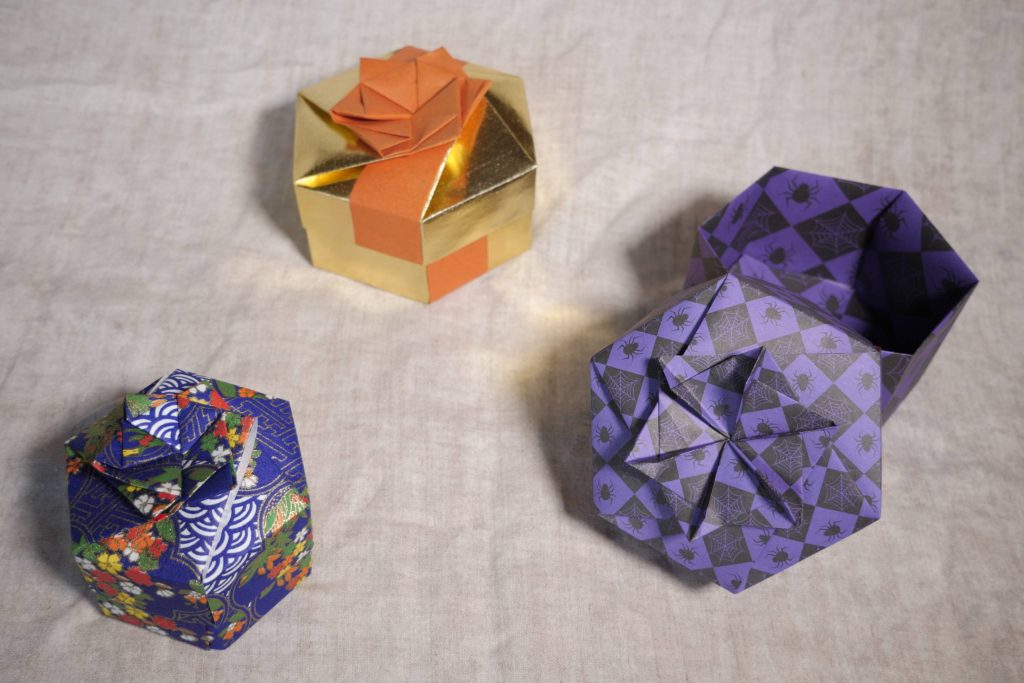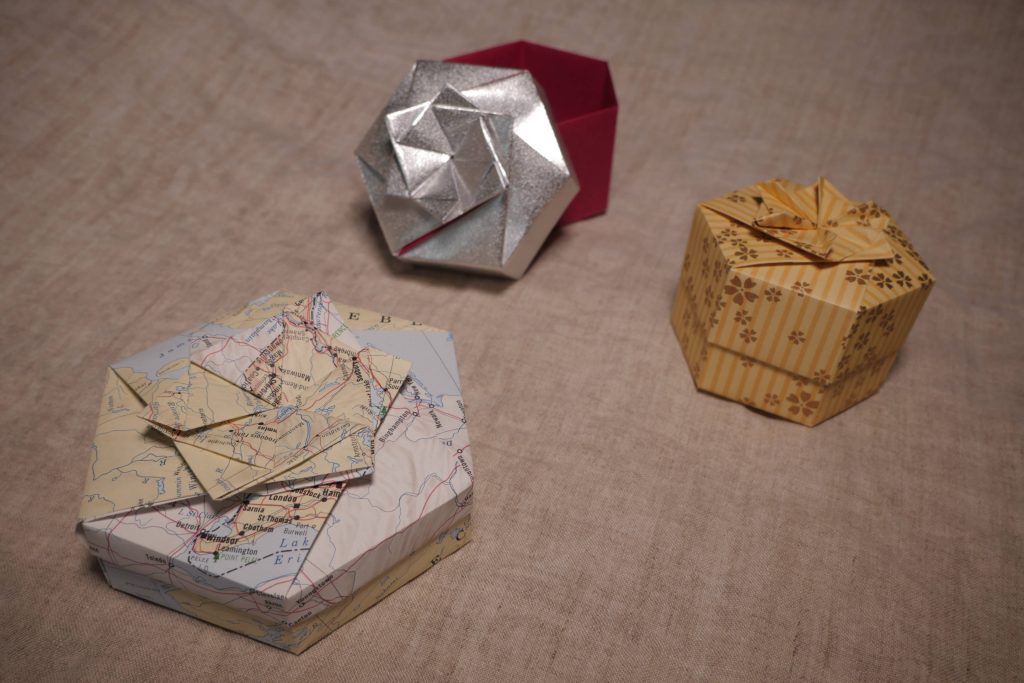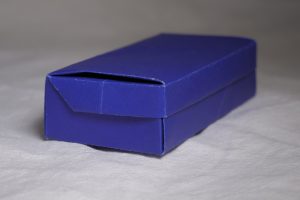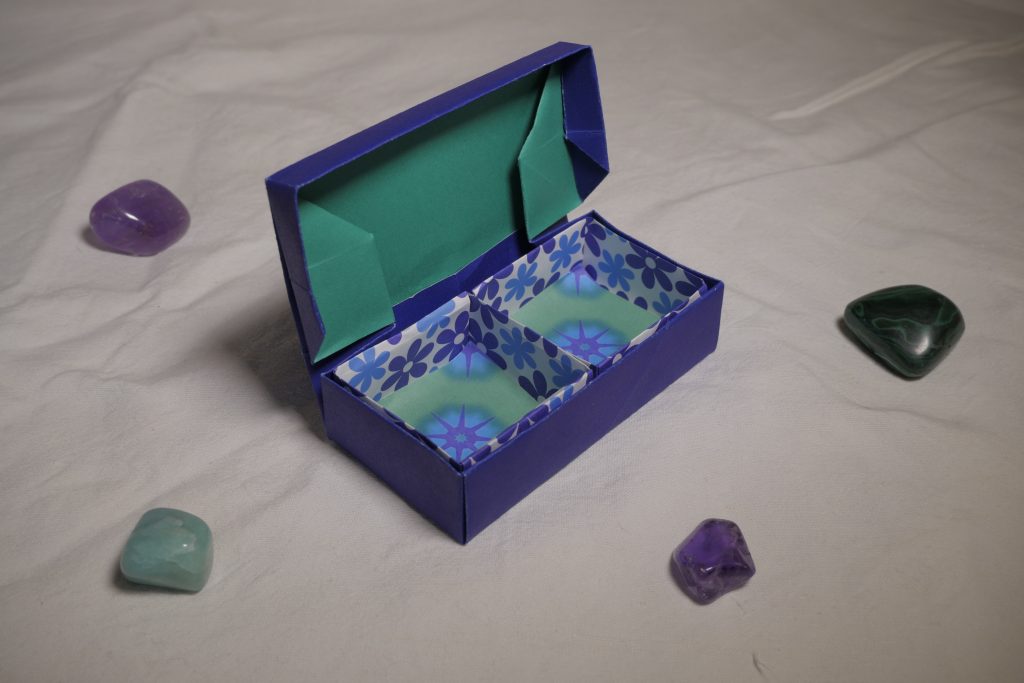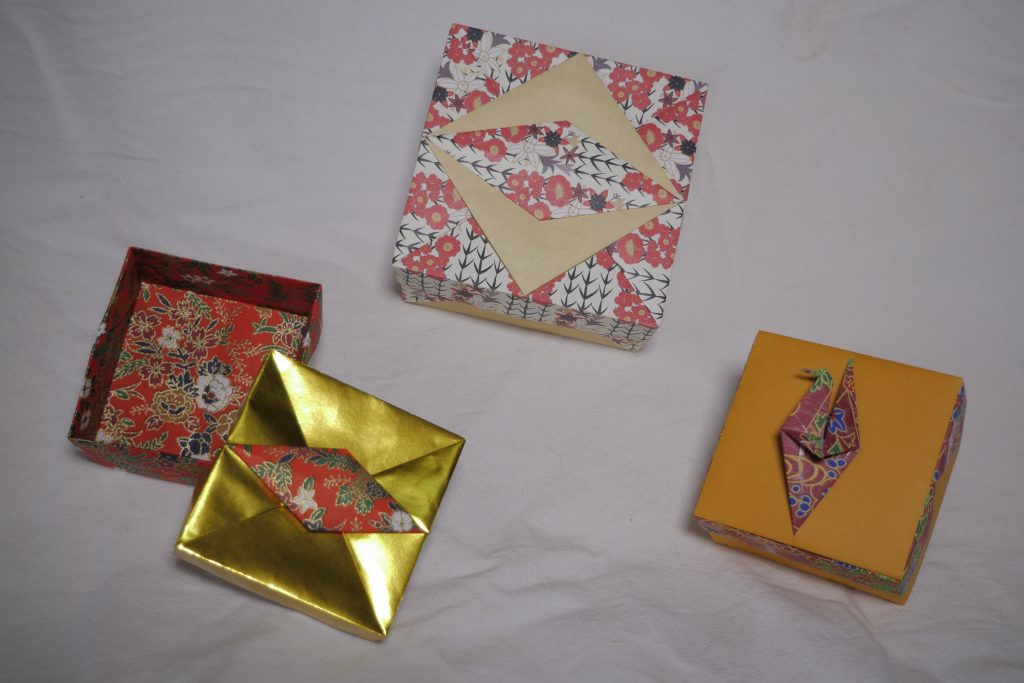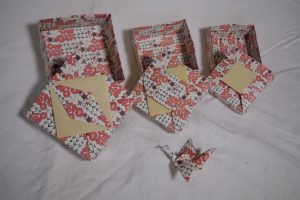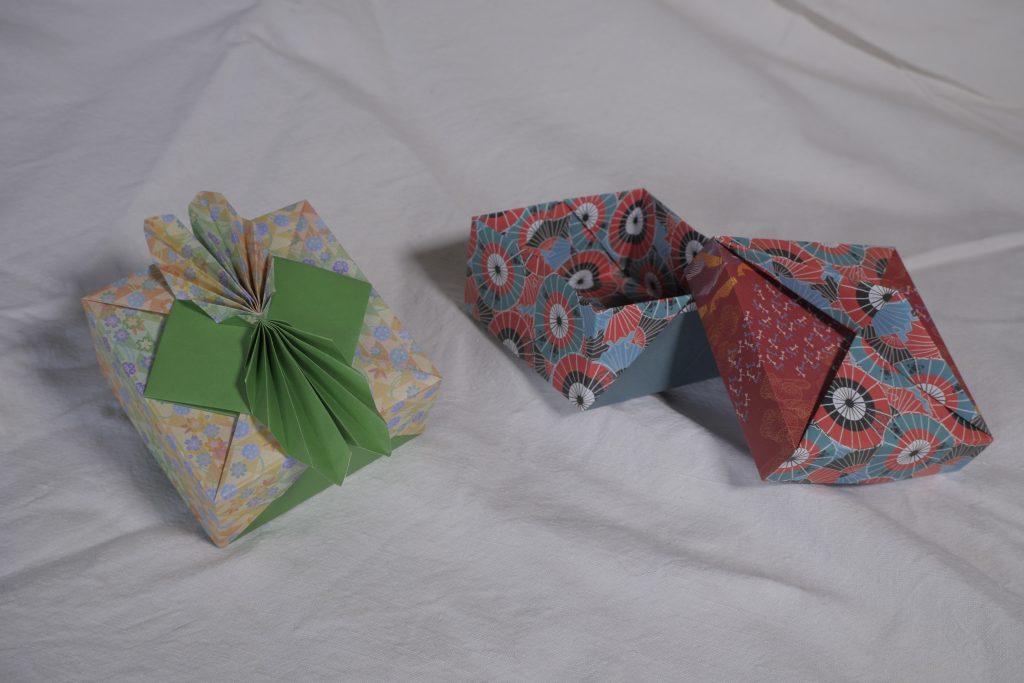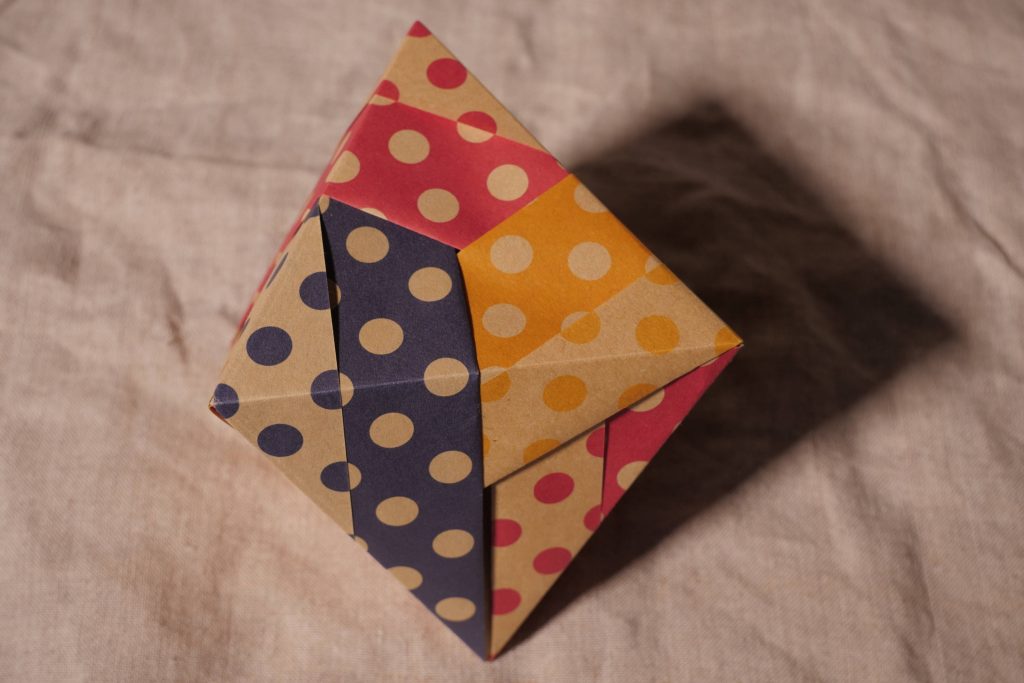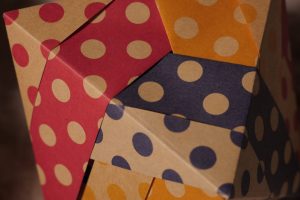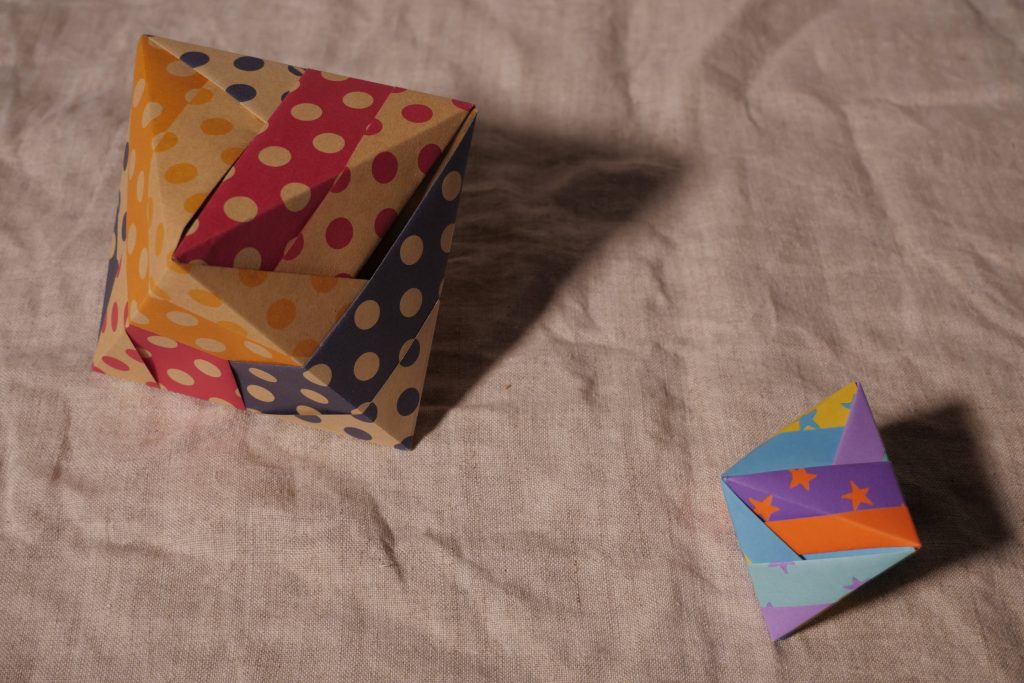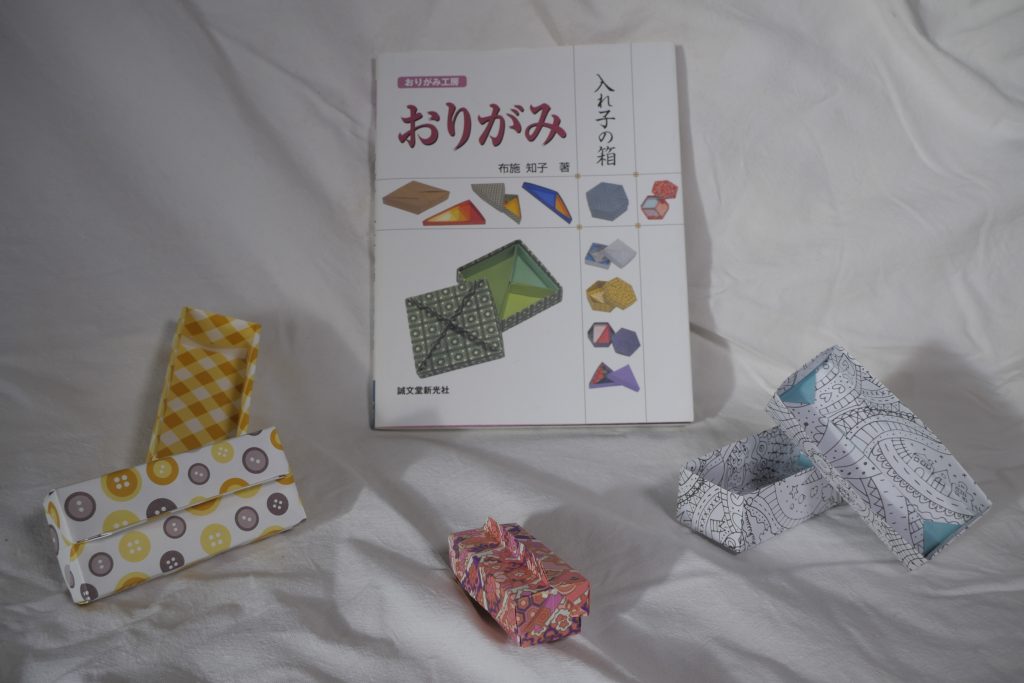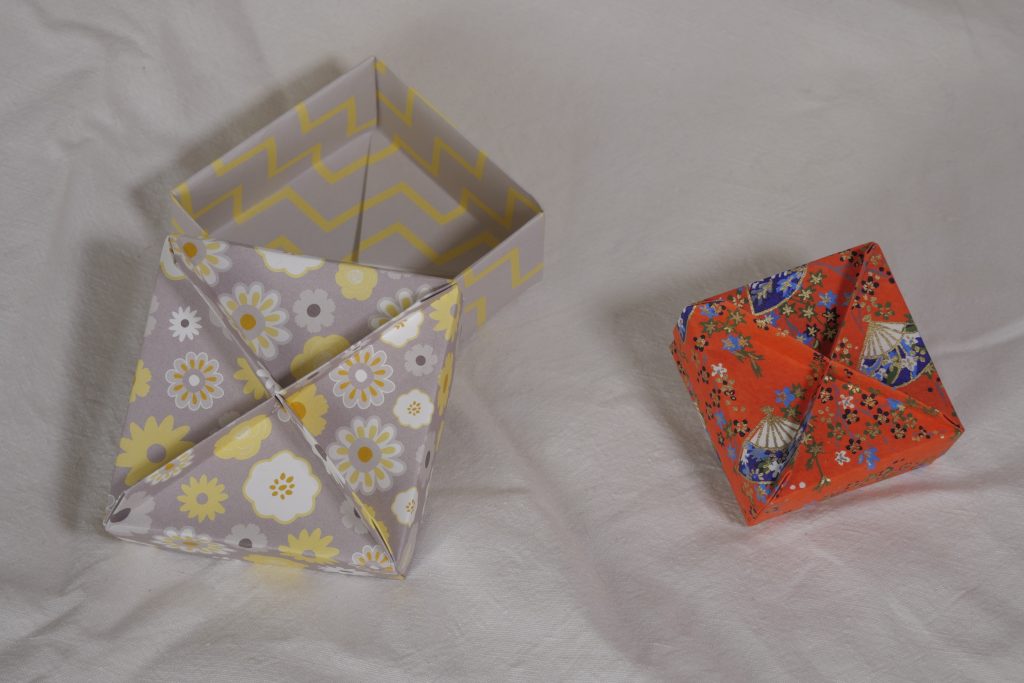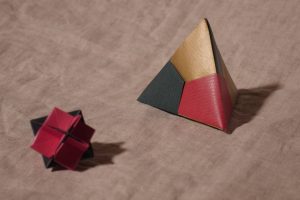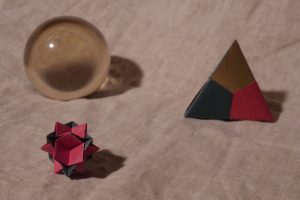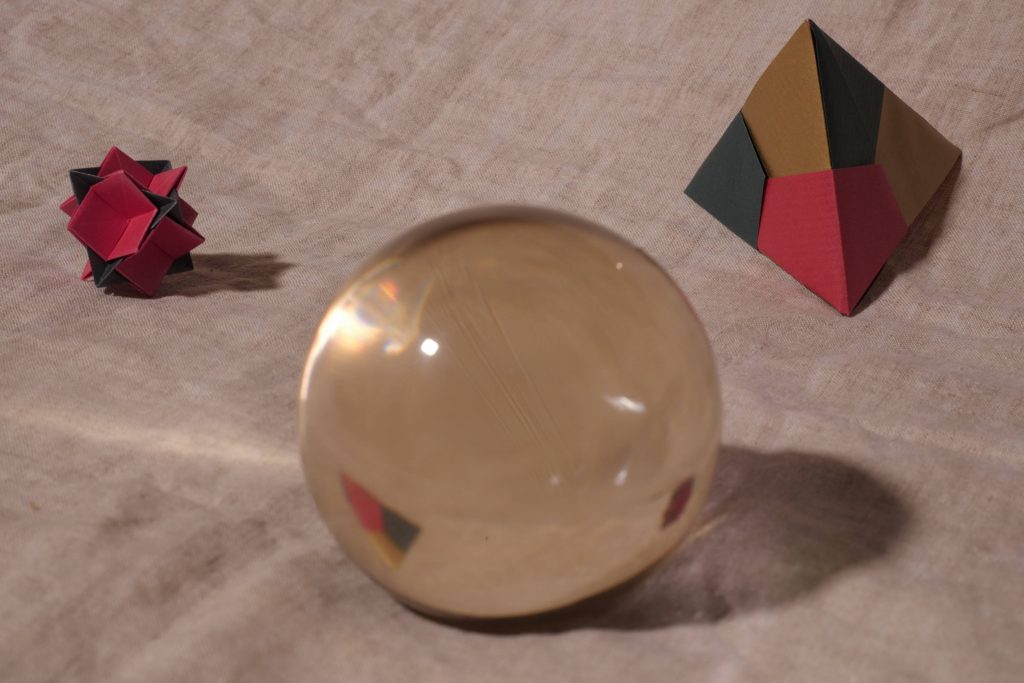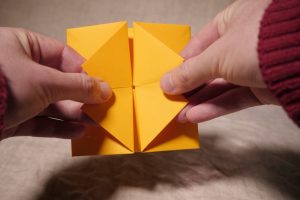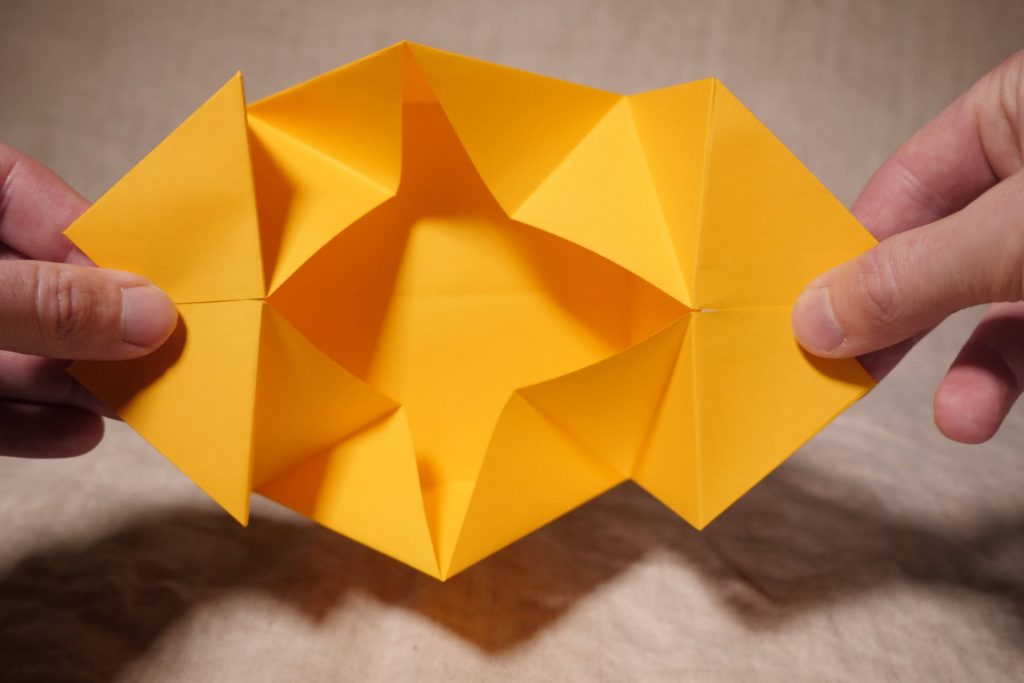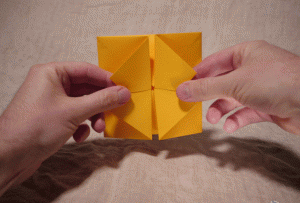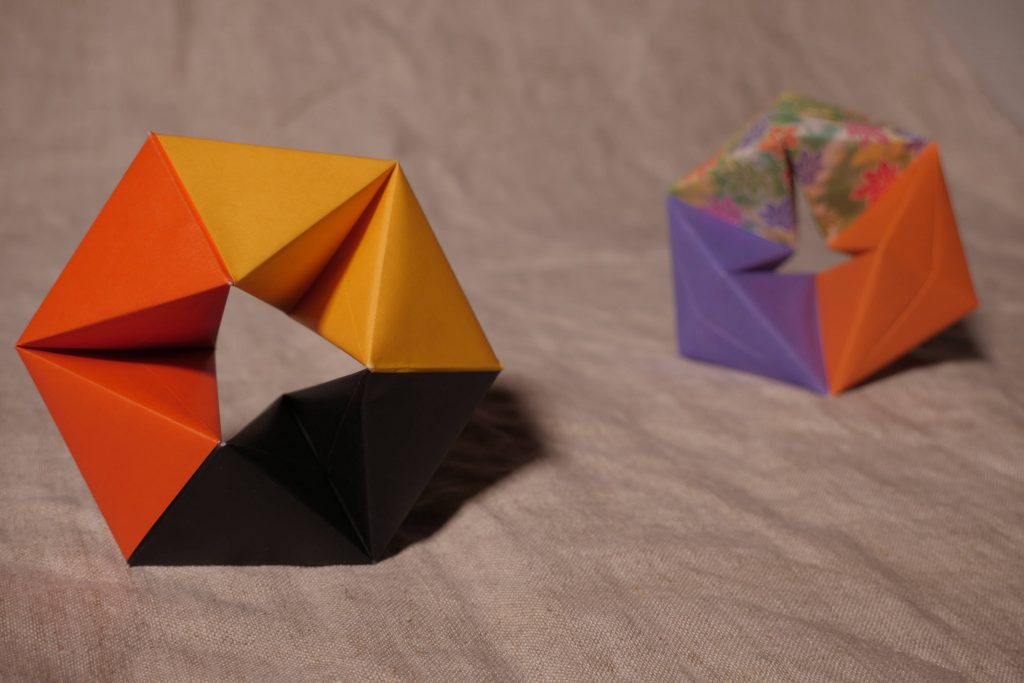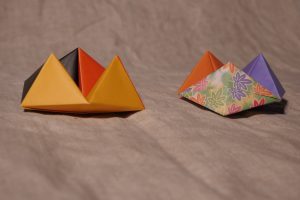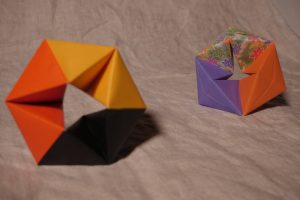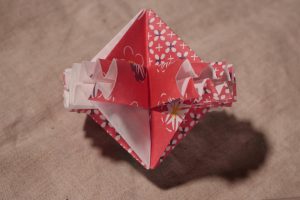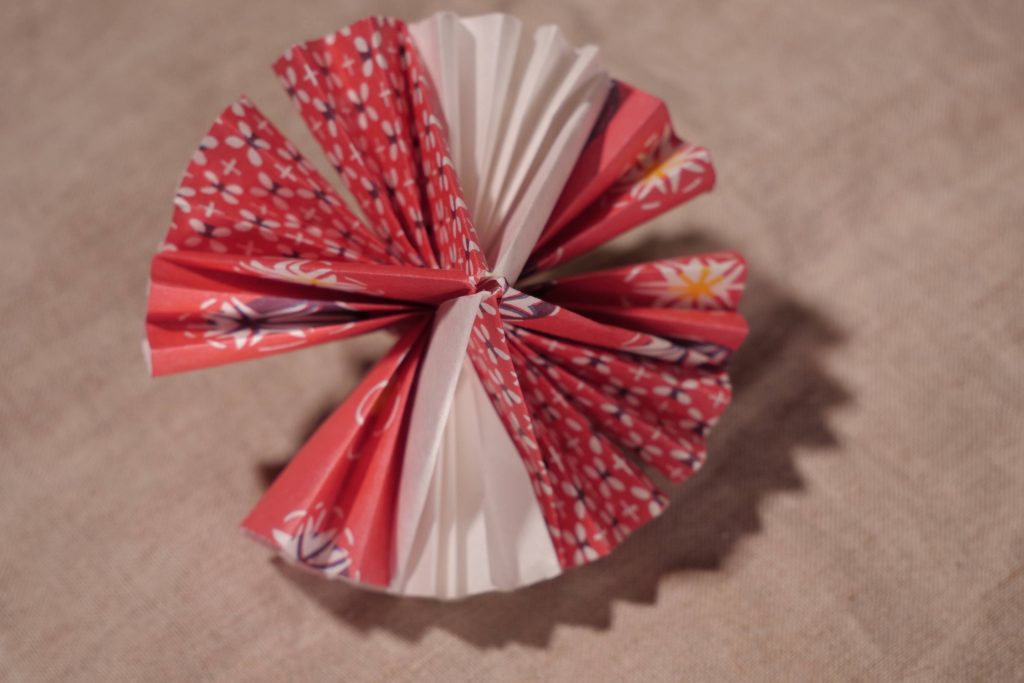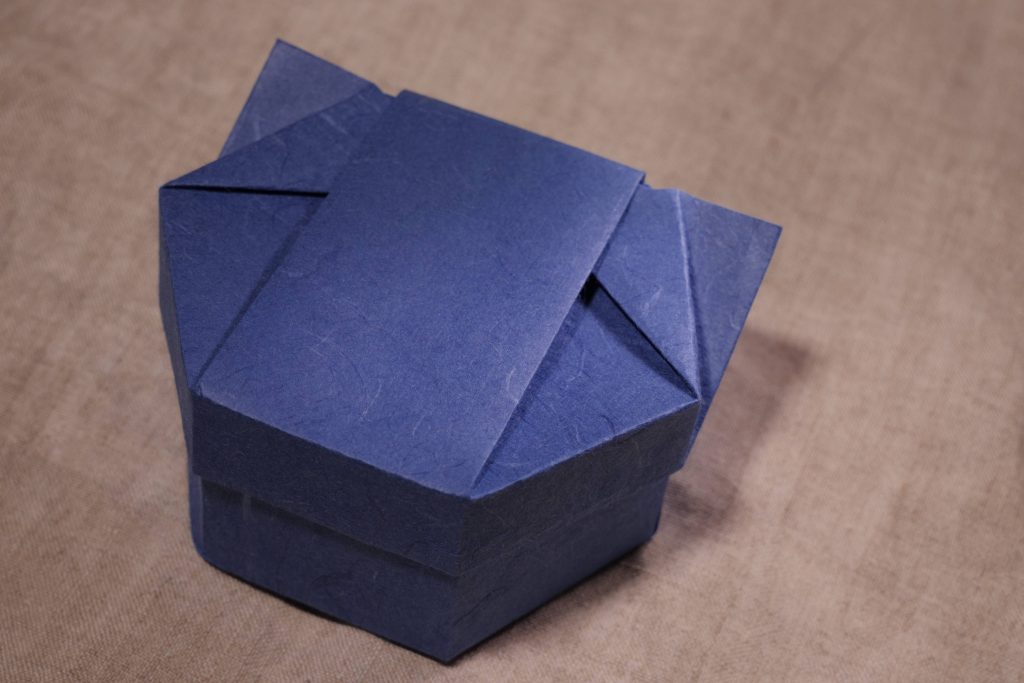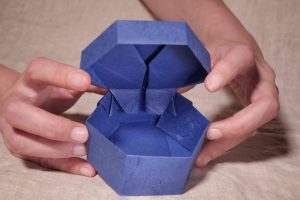I showed this model before, but as I said, it’s one of my favorites – so here are a few more.
On the left, the blue box is made from square chiyogami, 15cm. On the right, it’s square 20cm halloween paper by Avenue Mandarine (“Boo!”), same pattern on box and lid but smaller print on the lid.
The middle orange-gold box is 17X20cm paper for ancestors cult. I found it in the Asian shop where I buy ramen and green powder tea, couldn’t resist trying new paper – the colors fade fast, but it was really cheap, so it’s still good to make ephemeral gorgeous things :)
The red and silver box is made from 15cm double-sided paper by Daiso. It’s quite thick and I like the texture on the metallic side, makes a sturdy box. The yellow box on the right is 15cm print chiyogami, I think also from Daiso.
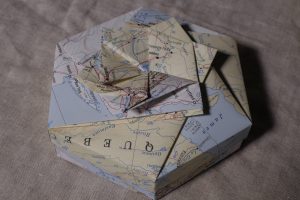
This one is made from 28X21.5cm maps of Québec. Maps are great papers for origami, they always look very classy I think :)
Details of the flower on the lid.

